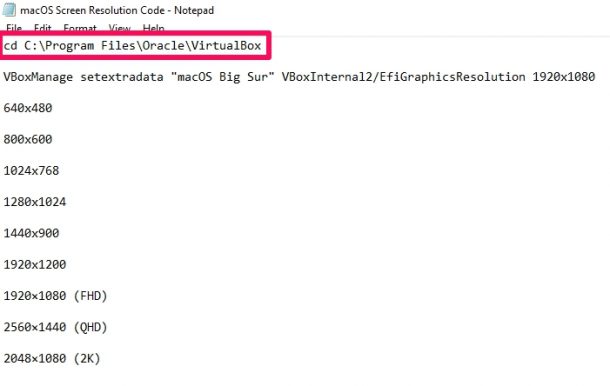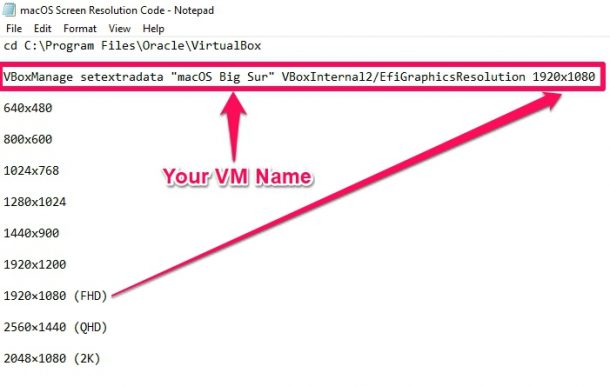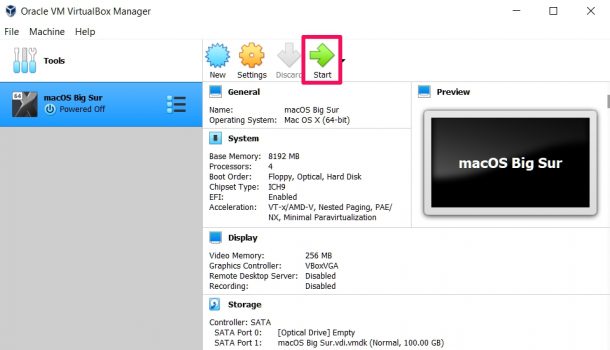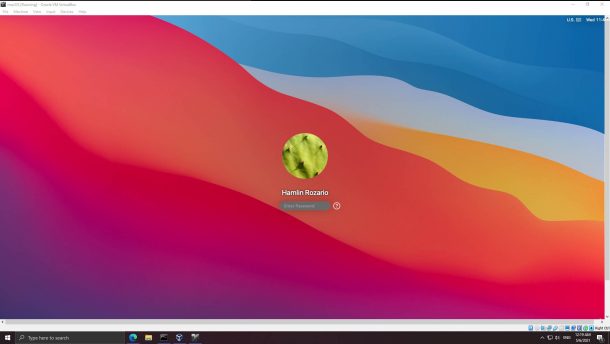How to Open macOS VirtualBox VM in Full Screen

Installed macOS using VirtualBox on your Windows PC only to find out that it’s not running in full screen? Well, this is something that a lot of new VirtualBox users run into, but it’s not really an issue. This can be resolved with a simple command line.
When you use VirtualBox to run macOS in a guest environment, the default resolution for the operating system is set to 1024×768. Considering most people have at least Full HD 1080p monitors these days, it’d appear as if macOS is running in a small window. Even if you try to maximize the window, the guest OS will not expand to fill up your screen. To fix this, you’ll need to match the resolution of your virtual machine with the monitor resolution.
Not sure where to get started? Do not worry as we’ll be helping you out with that here.
How to Open macOS VirtualBox VM in Full Screen
Note that these steps work only for VirtualBox and not any other software like VMware Workstation.
- First, download this file which contains the command line for changing the screen resolution. This will make it easier for you to follow. Open Command Prompt on your computer as an administrator and copy/paste the first line in the file. Press the Enter key.

- Next, you’ll need to copy and paste the second line in the file. But, before you do that, replace the resolution with your monitor resolution. For example, if you have a 4K monitor, change the resolution value to 3840×2160. Once you’ve pasted the code, hit the Enter key.

- Next, launch VirtualBox, select your macOS virtual machine from the left pane, and click on “Start” to boot it up.

- Now, macOS will boot up and fill your screen, but you’ll still see the VirtualBox window and menu items. To hide it and enter exclusive full-screen, press the Ctrl + F keys on your keyboard.

There you go. You’ve successfully configured your macOS virtual machine to run in full screen.
There’s one thing you need to keep in mind as you increase the resolution of your virtual machine, especially for higher resolutions like QHD and 4K. As you go higher, the performance of macOS may feel slower in VirtualBox since more resources are used. Therefore, it’s best to keep the resolution at Full HD or lower for keeping a balance between performance and quality.
This is just one of the things that new VirtualBox users run into while setting up a guest environment. Another one is connecting external USB devices. When you connect a device to your USB port, it gets recognized by Windows and not the guest OS. For the macOS to detect your USB device, you’ll need to mount it in the virtual machine using VirtualBox. You can learn more about connecting USB devices with VirtualBox right here.
Hopefully, you were able to make sure your macOS virtual machine fills up your entire screen every time you boot up. What screen resolution did you use in the command line? Did you notice the performance impact after raising the resolution? Share with us your experiences and sound off in the comments section down below.





